H. Eric Tseng
Autonomous Driving With Perception Uncertainties: Deep-Ensemble Based Adaptive Cruise Control
Mar 22, 2024



Abstract:Autonomous driving depends on perception systems to understand the environment and to inform downstream decision-making. While advanced perception systems utilizing black-box Deep Neural Networks (DNNs) demonstrate human-like comprehension, their unpredictable behavior and lack of interpretability may hinder their deployment in safety critical scenarios. In this paper, we develop an Ensemble of DNN regressors (Deep Ensemble) that generates predictions with quantification of prediction uncertainties. In the scenario of Adaptive Cruise Control (ACC), we employ the Deep Ensemble to estimate distance headway to the lead vehicle from RGB images and enable the downstream controller to account for the estimation uncertainty. We develop an adaptive cruise controller that utilizes Stochastic Model Predictive Control (MPC) with chance constraints to provide a probabilistic safety guarantee. We evaluate our ACC algorithm using a high-fidelity traffic simulator and a real-world traffic dataset and demonstrate the ability of the proposed approach to effect speed tracking and car following while maintaining a safe distance headway. The out-of-distribution scenarios are also examined.
Sharable Clothoid-based Continuous Motion Planning for Connected Automated Vehicles
Dec 18, 2023



Abstract:A continuous motion planning method for connected automated vehicles is considered for generating feasible trajectories in real-time using three consecutive clothoids. The proposed method reduces path planning to a small set of nonlinear algebraic equations such that the generated path can be efficiently checked for feasibility and collision. After path planning, velocity planning is executed while maintaining a parallel simple structure. Key strengths of this framework include its interpretability, shareability, and ability to specify boundary conditions. Its interpretability and shareability stem from the succinct representation of the resulting local motion plan using a handful of physically meaningful parameters. Vehicles may share these parameters via V2X communication so that the recipients can precisely reconstruct the planned trajectory of the senders and respond accordingly. The proposed local planner guarantees the satisfaction of boundary conditions, thus ensuring seamless integration with a wide array of higher-level global motion planners. The tunable nature of the method enables tailoring the local plans to specific maneuvers like turns at intersections, lane changes, and U-turns.
Dream to Adapt: Meta Reinforcement Learning by Latent Context Imagination and MDP Imagination
Nov 11, 2023Abstract:Meta reinforcement learning (Meta RL) has been amply explored to quickly learn an unseen task by transferring previously learned knowledge from similar tasks. However, most state-of-the-art algorithms require the meta-training tasks to have a dense coverage on the task distribution and a great amount of data for each of them. In this paper, we propose MetaDreamer, a context-based Meta RL algorithm that requires less real training tasks and data by doing meta-imagination and MDP-imagination. We perform meta-imagination by interpolating on the learned latent context space with disentangled properties, as well as MDP-imagination through the generative world model where physical knowledge is added to plain VAE networks. Our experiments with various benchmarks show that MetaDreamer outperforms existing approaches in data efficiency and interpolated generalization.
Decision-Making for Autonomous Vehicles with Interaction-Aware Behavioral Prediction and Social-Attention Neural Network
Nov 01, 2023



Abstract:Autonomous vehicles need to accomplish their tasks while interacting with human drivers in traffic. It is thus crucial to equip autonomous vehicles with artificial reasoning to better comprehend the intentions of the surrounding traffic, thereby facilitating the accomplishments of the tasks. In this work, we propose a behavioral model that encodes drivers' interacting intentions into latent social-psychological parameters. Leveraging a Bayesian filter, we develop a receding-horizon optimization-based controller for autonomous vehicle decision-making which accounts for the uncertainties in the interacting drivers' intentions. For online deployment, we design a neural network architecture based on the attention mechanism which imitates the behavioral model with online estimated parameter priors. We also propose a decision tree search algorithm to solve the decision-making problem online. The proposed behavioral model is then evaluated in terms of its capabilities for real-world trajectory prediction. We further conduct extensive evaluations of the proposed decision-making module, in forced highway merging scenarios, using both simulated environments and real-world traffic datasets. The results demonstrate that our algorithms can complete the forced merging tasks in various traffic conditions while ensuring driving safety.
Predictive Control for Autonomous Driving with Uncertain, Multi-modal Predictions
Oct 31, 2023



Abstract:We propose a Stochastic MPC (SMPC) formulation for path planning with autonomous vehicles in scenarios involving multiple agents with multi-modal predictions. The multi-modal predictions capture the uncertainty of urban driving in distinct modes/maneuvers (e.g., yield, keep speed) and driving trajectories (e.g., speed, turning radius), which are incorporated for multi-modal collision avoidance chance constraints for path planning. In the presence of multi-modal uncertainties, it is challenging to reliably compute feasible path planning solutions at real-time frequencies ($\geq$ 10 Hz). Our main technological contribution is a convex SMPC formulation that simultaneously (1) optimizes over parameterized feedback policies and (2) allocates risk levels for each mode of the prediction. The use of feedback policies and risk allocation enhances the feasibility and performance of the SMPC formulation against multi-modal predictions with large uncertainty. We evaluate our approach via simulations and road experiments with a full-scale vehicle interacting in closed-loop with virtual vehicles. We consider distinct, multi-modal driving scenarios: 1) Negotiating a traffic light and a fast, tailgating agent, 2) Executing an unprotected left turn at a traffic intersection, and 3) Changing lanes in the presence of multiple agents. For all of these scenarios, our approach reliably computes multi-modal solutions to the path-planning problem at real-time frequencies.
Interaction-Aware Decision-Making for Autonomous Vehicles in Forced Merging Scenario Leveraging Social Psychology Factors
Sep 25, 2023



Abstract:Understanding the intention of vehicles in the surrounding traffic is crucial for an autonomous vehicle to successfully accomplish its driving tasks in complex traffic scenarios such as highway forced merging. In this paper, we consider a behavioral model that incorporates both social behaviors and personal objectives of the interacting drivers. Leveraging this model, we develop a receding-horizon control-based decision-making strategy, that estimates online the other drivers' intentions using Bayesian filtering and incorporates predictions of nearby vehicles' behaviors under uncertain intentions. The effectiveness of the proposed decision-making strategy is demonstrated and evaluated based on simulation studies in comparison with a game theoretic controller and a real-world traffic dataset.
REFINE: Reachability-based Trajectory Design using Robust Feedback Linearization and Zonotopes
Nov 22, 2022Abstract:Performing real-time receding horizon motion planning for autonomous vehicles while providing safety guarantees remains difficult. This is because existing methods to accurately predict ego vehicle behavior under a chosen controller use online numerical integration that requires a fine time discretization and thereby adversely affects real-time performance. To address this limitation, several recent papers have proposed to apply offline reachability analysis to conservatively predict the behavior of the ego vehicle. This reachable set can be constructed by utilizing a simplified model whose behavior is assumed a priori to conservatively bound the dynamics of a full-order model. However, guaranteeing that one satisfies this assumption is challenging. This paper proposes a framework named REFINE to overcome the limitations of these existing approaches. REFINE utilizes a parameterized robust controller that partially linearizes the vehicle dynamics even in the presence of modeling error. Zonotope-based reachability analysis is then performed on the closed-loop, full-order vehicle dynamics to compute the corresponding control-parameterized, over-approximate Forward Reachable Sets (FRS). Because reachability analysis is applied to the full-order model, the potential conservativeness introduced by using a simplified model is avoided. The pre-computed, control-parameterized FRS is then used online in an optimization framework to ensure safety. The proposed method is compared to several state of the art methods during a simulation-based evaluation on a full-size vehicle model and is evaluated on a 1/10th race car robot in real hardware testing. In contrast to existing methods, REFINE is shown to enable the vehicle to safely navigate itself through complex environments.
Safe Control and Learning Using Generalized Action Governor
Nov 22, 2022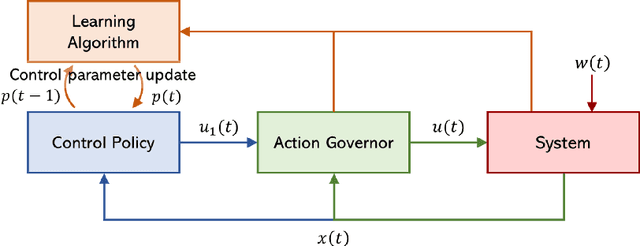
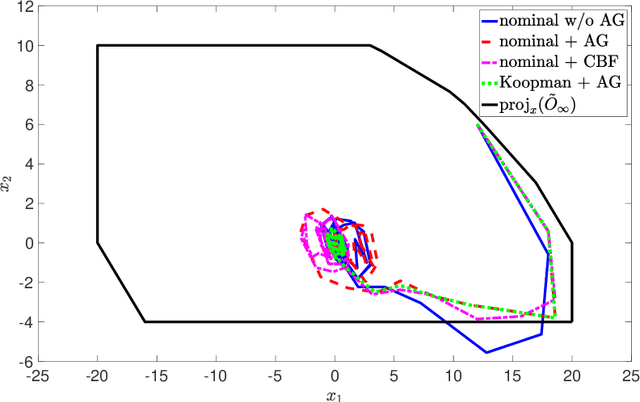
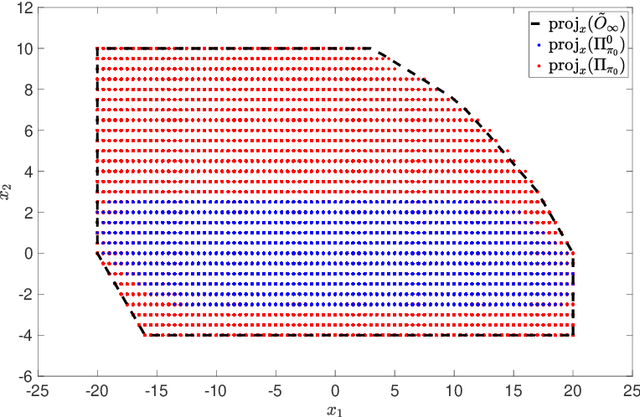
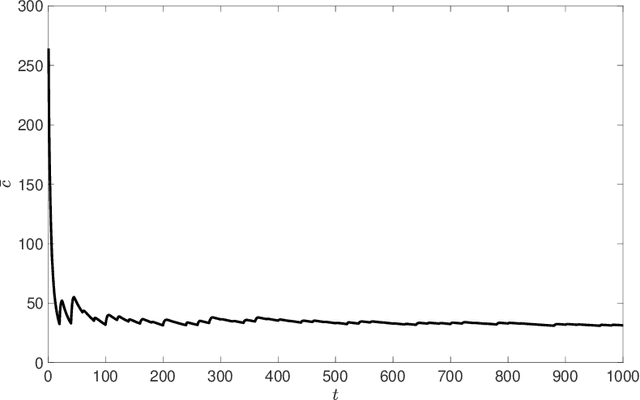
Abstract:This paper introduces the Generalized Action Governor, which is a supervisory scheme for augmenting a nominal closed-loop system with the capability of strictly handling constraints. After presenting its theory for general systems and introducing tailored design approaches for linear and discrete systems, we discuss its application to safe online learning, which aims to safely evolve control parameters using real-time data to improve performance for uncertain systems. In particular, we propose two safe learning algorithms based on integration of reinforcement learning/data-driven Koopman operator-based control with the generalized action governor. The developments are illustrated with a numerical example.
Robust Action Governor for Uncertain Piecewise Affine Systems with Non-convex Constraints and Safe Reinforcement Learning
Jul 17, 2022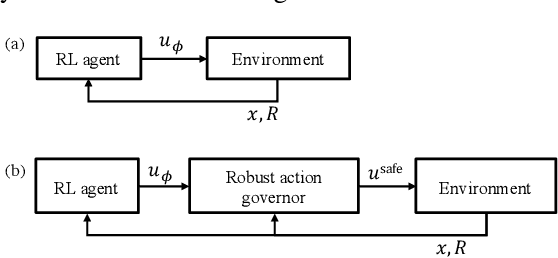
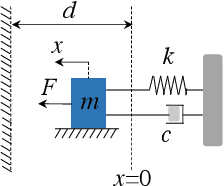
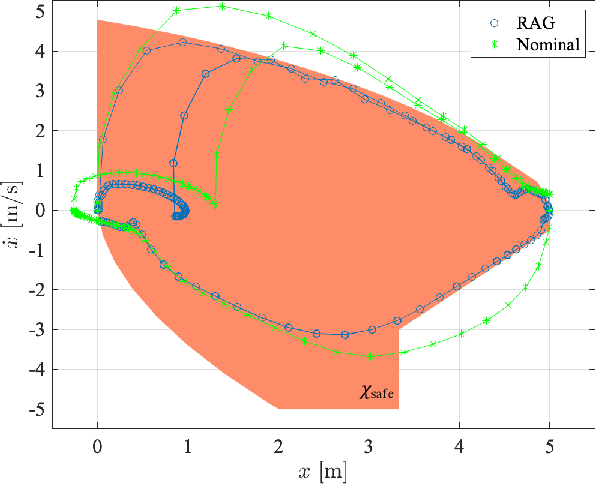
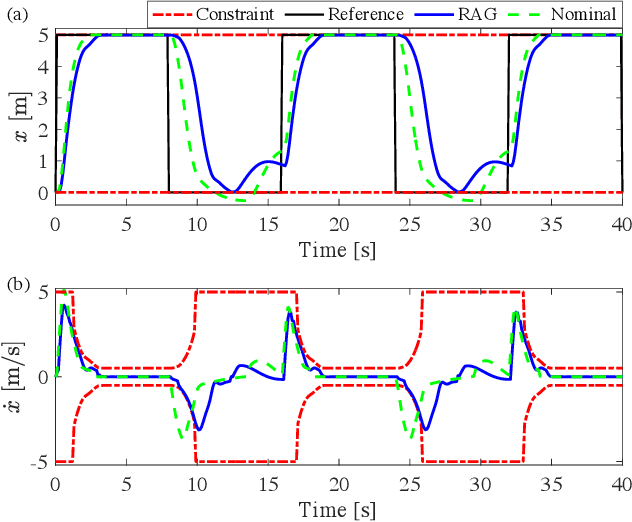
Abstract:The action governor is an add-on scheme to a nominal control loop that monitors and adjusts the control actions to enforce safety specifications expressed as pointwise-in-time state and control constraints. In this paper, we introduce the Robust Action Governor (RAG) for systems the dynamics of which can be represented using discrete-time Piecewise Affine (PWA) models with both parametric and additive uncertainties and subject to non-convex constraints. We develop the theoretical properties and computational approaches for the RAG. After that, we introduce the use of the RAG for realizing safe Reinforcement Learning (RL), i.e., ensuring all-time constraint satisfaction during online RL exploration-and-exploitation process. This development enables safe real-time evolution of the control policy and adaptation to changes in the operating environment and system parameters (due to aging, damage, etc.). We illustrate the effectiveness of the RAG in constraint enforcement and safe RL using the RAG by considering their applications to a soft-landing problem of a mass-spring-damper system.
Interaction-Aware Trajectory Prediction and Planning for Autonomous Vehicles in Forced Merge Scenarios
Dec 14, 2021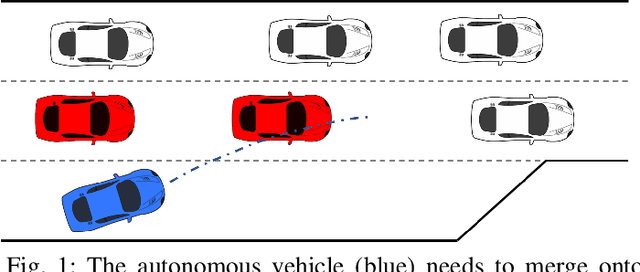

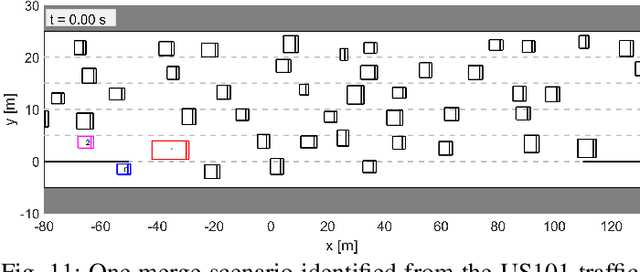
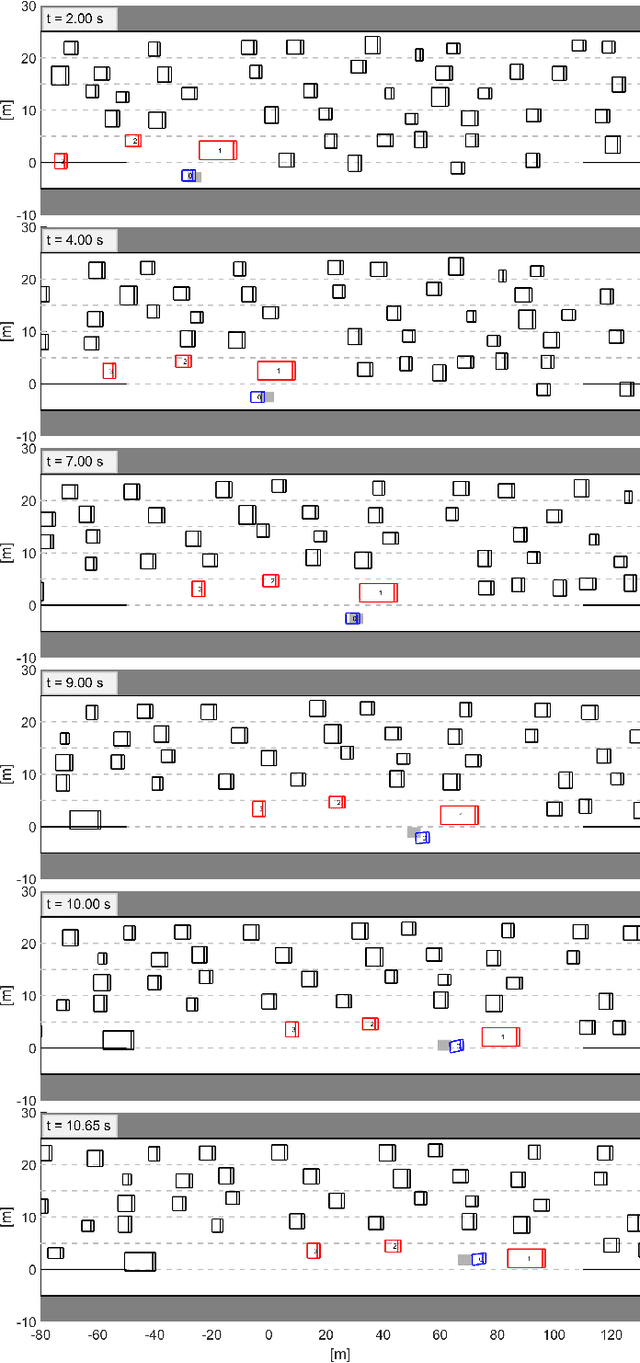
Abstract:Merging is, in general, a challenging task for both human drivers and autonomous vehicles, especially in dense traffic, because the merging vehicle typically needs to interact with other vehicles to identify or create a gap and safely merge into. In this paper, we consider the problem of autonomous vehicle control for forced merge scenarios. We propose a novel game-theoretic controller, called the Leader-Follower Game Controller (LFGC), in which the interactions between the autonomous ego vehicle and other vehicles with a priori uncertain driving intentions is modeled as a partially observable leader-follower game. The LFGC estimates the other vehicles' intentions online based on observed trajectories, and then predicts their future trajectories and plans the ego vehicle's own trajectory using Model Predictive Control (MPC) to simultaneously achieve probabilistically guaranteed safety and merging objectives. To verify the performance of LFGC, we test it in simulations and with the NGSIM data, where the LFGC demonstrates a high success rate of 97.5% in merging.
 Add to Chrome
Add to Chrome Add to Firefox
Add to Firefox Add to Edge
Add to Edge